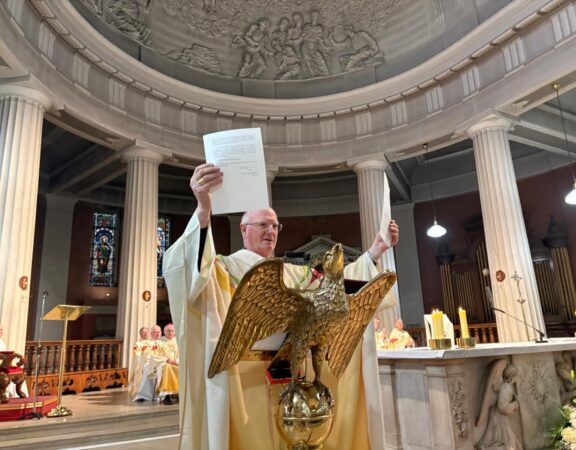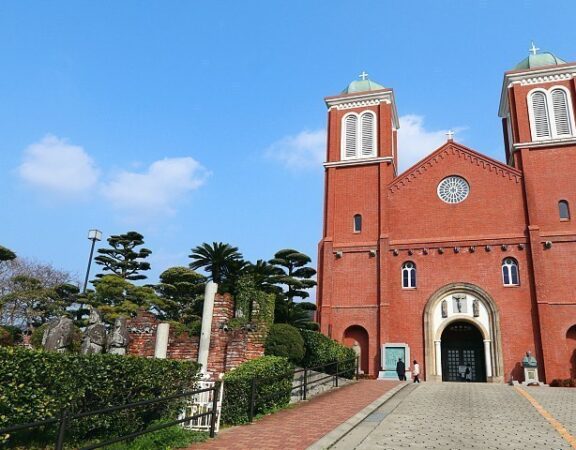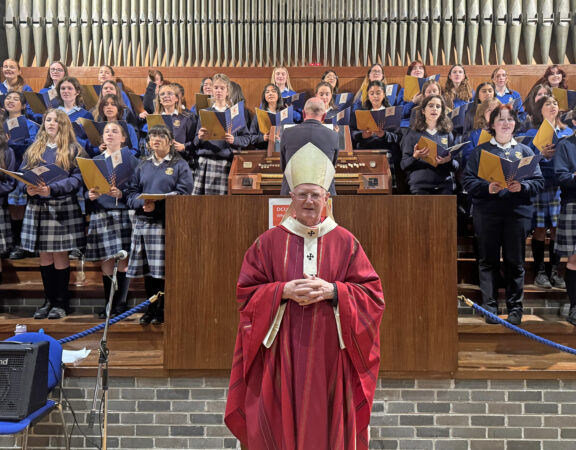INTERNATIONAL MILITARY PILGRIMAGE TO LOURDES 2008
Homily Notes of
Most Rev. Diarmuid Martin
Archbishop of Dublin, Primate of Ireland
—————-
24th May 2008
Most Rev. Diarmuid Martin
Archbishop of Dublin, Primate of Ireland
—————-
24th May 2008
We are gathered in a privileged place at a privileged moment. We gather at an evidently holy place. We gather on the one hundred and fiftieth anniversary of the apparitions of Our Lady to the young Bernadette.
Why are we here? Why should over 25,000 people from military and civil defence corps from all over the world gather here, together with the thousands of other pilgrims from all over the world, so different and yet so similar to ourselves, who come to this shrine?
What is it about this Shrine? How can it bring so many together? How can it impress so many: strong believers, the just plain curious, and even perhaps the cynical; how can it gather the sick and the healthy, the important and those without any pretence of importance. Yet coming here to Lourdes all go away with a unique experience.
Why should each year thousands of young men and women come to Lourdes using their holidays to serve as volunteers to assist the sick, when they could just as well go to the fashionable beach resorts of France and Spain just a few kilometres from here? What is it that is so special about Lourdes?
It is something that is hard to explain. Just as the story of Lourdes has been hard to explain over the period since Bernadette first came to this isolated spot and encountered the Blessed Virgin. The fact that Mary should have appeared here to a poor, barely literate girl is in itself something remarkable. The fact that that encounter should result in something which has had an impact for generations, something that has affected the lives of so many and has brought healing and serenity to the gravely sick and the most distressed is something which begs and explanation..
Lourdes is one of the most visited Shrines in the world, of any faith. Yet the first reaction to Bernadette was of opposition and hostility. Lourdes has flourished over decades in the face of a culture of various generations of hostility and miscomprehension.
The apparitions at Lourdes occurred at a high point in a culture of rationalism, where everything had to have its rational explanation or else it was unreal or unauthentic. Over the years, Lourdes has quietly flourished in the face of other hostile cultures, whether of atheistic Marxism or agnostic materialism. Lourdes still retains its unique character and appeal.
When we look closely, we can see that Lourdes is a place where accepted values are overturned. Lourdes is a place where sickness is looked on with respect. The sick and the handicapped are treated in Lourdes as our most treasured pilgrims. No one in Lourdes is judged on outward appearances. A holy shrine welcomes humble sinners. In a world full of self confidence, those who are troubled, who are anxious are accepted and recognised really as pilgrims, all of us on the same path towards an acceptance of that “joyful hope” to which we are all called.
Lourdes is a shrine of Mary, but Mary is the first to point our hearts and minds towards her son Jesus. Mary in her short conversations with Bernadette indicates to us the path towards her son: the path of repentance and penance, the path of prayer and of the Eucharist.
Lourdes is a place of prayer. Come here to the Grotto at any time of day or night and alongside the large pilgrimages, you will find in quiet corners anonymous pilgrims deep in prayer. Who knows how many persons, young and old, have silently come to this sanctuary to place themselves in prayer before Jesus, a prayer of humility admitting one’s weakness or sinfulness, a prayer of petition seeking something important for our own lives or for the lives of those dear to us, a prayer to be cured, healed and made fully oneself, a rare moment of genuine prayer of worship an adoration, a recognition of the lordship and transcendence of God.
Lourdes rejects dominant cultures and turns them head over heels. It is not the strength of our own forces which triumphs here, but the power of God. Prayer is a unique way of refinding a balance in our values in today’s world. In a world dominated by market values, by power, and by personal attainment, prayer means placing oneself humbly in the presence of a reality that is greater than us and recognising that our lives are in the hand of someone greater than us, and that that someone cares for us and supports us. God is love.
Prayer is that moment in which we rediscover the values of life are not the obvious one of the media or society, but in knowing that there is something more vital and deeper in life. Prayer is not pious conformity, but real revolution in the face of the accepted wisdom that on our own we can do everything. The young person who learns to pray becomes independent of the pressures of our culture. The sick person who learns to pray becomes one who refinds meaning in his or her life and finds that there is a hope that goes beyond outward physical condition.
Prayer is a witness to the total otherness of God. Prayer is the moment in which our faith is expressed in its deepest and most concrete form. It is the moment in which we recognise that the God who is other is a real dimension of our reality, of the reality of my life. Prayer is the moment in which we attempt to make our lives into a concrete response of love to the superabundant love which God shows for us.
Mary is a model for all humanity, also because in being free from original sin, she in a very special way mirrors that original image of God which was the distinctive mark of humankind, before the damaging and disfiguring sin of Adam. Through her obedience to the Word of God, Mary constitutes the beginnings of the restoration of the original harmony which God had desired for his creation, that redemption through Jesus which will free humanity and creation from the effects of original sin.
Mary, in her entire life, mirrored that fidelity of God and remained faithful and attentive to his word in every moment of her life. We see that from the very first mention of her in the Gospel at the Annunciation up to the last mention in the Acts of the Apostles, where we find her gathered with the small community of the early Church, in prayer and in expectation of the Spirit, imploring the gift of the Spirit for the Church. Mary is always presented as being the one who listens to the word of God and puts it into practice, even in the most difficult moments, because she knew that God would always be faithful to his Word.
Here in Lourdes in these days men and women who have responsibility for the defence and protection of peoples come also to see more clearly their mission as service. Mary, in her Magnificat, is the one who teaches us the folly of human arrogance and indicates the power of humility. In that way she offers a pattern of life which can inspire the particular service of those whose mission is fundamentally a mission of peace. The force of arms can prevent conflict and may be needed to prevent conflict. But the arms of peace are fundamentally an overturning of any form of arrogance through an ability to listen, to understand, to mediate, to reconcile.
We remember at this patently holy place all our friends who have paid the highest price, that of their lives in the cause of peace and understanding. We thank them for their sacrifice. We remember their dear ones who remain, saddened and in grief but also proud of what their family member had achieved.
We pray for peace at this Grotto which is a remarkable oasis of peace and we commit ourselves to being more and more, in our hearts, in our families in our professions as true peacemakers, which is the mark of the children of God.
Homily Notes ofArchbishop of Dublin, Primate of Ireland—————-24 May 2008
Homily Notes ofArchbishop of Dublin, Primate of Ireland—————-24 May 2008







